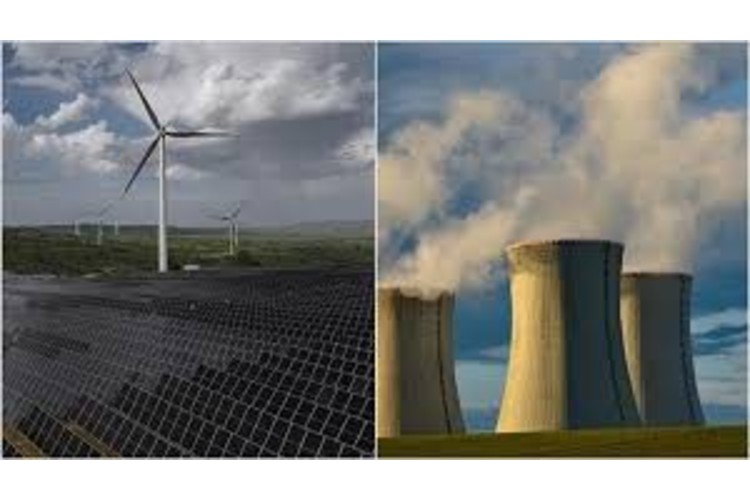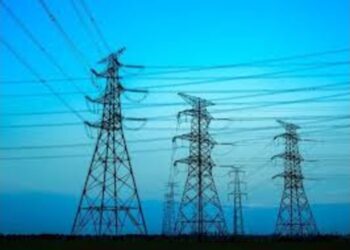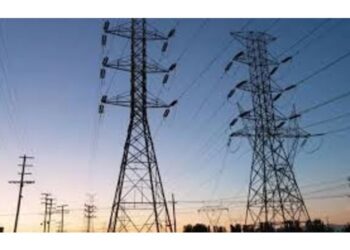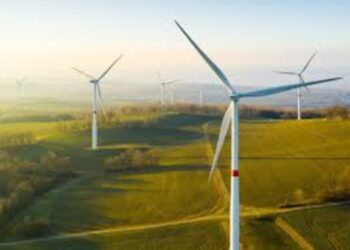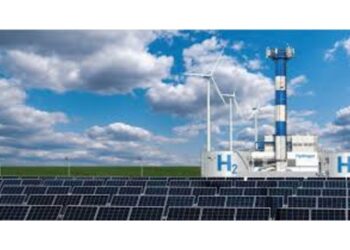Washington DC – A review by the SUN DAY Campaign of data recently released by the Federal Energy Regulatory Commission (FERC) reveals that the combination of solar and wind accounted for almost 98% of new U.S. electrical generating capacity added in the first quarter of 2025. Solar and wind were also the only sources of new capacity in March. In addition, March was the nineteenth month in a row in which solar was the largest source of new capacity.
Renewables were 100% of new generating capacity in March and 98% year-to-date:
In its latest monthly “Energy Infrastructure Update” report (with data through March 31, 2025), FERC says 31 “units” of solar totaling 446 megawatts (MW) were placed into service in March along with one unit of wind – the 223.9-MW Shamrock Wind & Storage Project in Crockett County, TX. Combined they accounted for 100% of all new generating capacity added during the month.
For the first three months of the year, the combination of solar and wind (7,076-MW) was 97.8% of new capacity while natural gas (147-MW) provided just 2.0% and another 0.2% came from oil (11-MW).
Solar was two-thirds of new capacity added in March and >72% year-to-date:
Solar accounted for two-thirds (66.6%) of all new generating capacity placed into service in March. It was 72.3% of new capacity added during the first three months of 2025.
Among solar’s recent additions were the 225.0-MW Darien Solar Center in Wisconsin and the 125.0-MW Brandt Woods Solar Project in Michigan.
Solar has now been the largest source of new generating capacity added each month for nineteen consecutive months: September 2023 – March 2025.
New wind accounted for the remaining third (33.4%) of capacity additions in March and provided over a fourth (25.5%) of new additions for the quarter.
Solar plus wind are almost a quarter of U.S. utility-scale generating capacity; all renewables combined are nearly a third:
The installed capacities of solar (10.7%) and wind (11.8%) are now each more than a tenth of the nation’s total. Taken together, they constitute almost one-fourth (22.5%) of the U.S.’s total available installed utility-scale generating capacity.
Moreover, approximately 30% of U.S. solar capacity is in the form of small-scale (e.g., rooftop) systems that is not reflected in FERC’s data. [1] Including that additional solar capacity would bring the share provided by solar + wind to more than a quarter of the nation’s total.
With the inclusion of hydropower (7.7%), biomass (1.1%) and geothermal (0.3%), renewables currently claim a 31.5% share of total U.S. utility-scale generating capacity. If small-scale solar capacity is included, renewables are now about one-third of total U.S. generating capacity.
For perspective, a year earlier, the mix of utility-scale renewables accounted for 29.4% of total installed generating capacity, including solar (8.3%) and wind (11.8%). Five years ago, it was 22.7%; solar was 3.8% and wind was 9.0%. Ten years ago, it was 16.9% with wind at 5.7% and solar at 1.0%. Thus, over the past decade, wind’s share of U.S. generating capacity has more than doubled while that of solar has increased by more than ten-fold. [2]
Solar remains on track to become the second largest source of U.S. generating capacity:
FERC reports that net “high probability” additions of solar between April 2025 and March 2028 total 89,452-MW – an amount more than four times the forecast net “high probability” additions for wind (22,109-MW), the second fastest growing resource. FERC also foresees net growth for hydropower (596-MW) and geothermal (92-MW) but a decrease of 130-MW in biomass capacity.
Taken together, the net new “high probability” capacity additions by all renewable energy sources over the next three years – i.e., the bulk of the Trump Administration’s remaining time in office – would total 112,119-MW.
On the other hand, there is no new nuclear capacity in FERC’s three-year forecast while coal and oil are projected to contract by 24,372-MW and 2,108-MW respectively. Natural gas capacity would expand by 1,738-MW.
Thus, adjusting for the different capacity factors of gas (59.7%), wind (34.3%), and utility-scale solar (23.4%), electricity generated by the projected new solar capacity to be added in the coming three years should be at least 20 times greater than that produced by the new natural gas capacity while the electrical output by new wind capacity would be over seven times more than gas. [3]
If FERC’s current “high probability” additions materialize, by April 1, 2028, solar will account for nearly one-sixth (16.3%) of the nation’s installed utility-scale generating capacity. Wind would provide an additional one-eighth (12.6%) of the total. Thus, each would be greater than coal (12.4%) and substantially more than either nuclear power or hydropower (7.3% and 7.2% respectively).
In fact, assuming current growth rates continue, the installed capacity of utility-scale solar is likely to surpass coal and wind in less than two years, placing solar in second place for installed generating capacity – behind only natural gas.
The combined capacities of all renewables, including small-scale solar, may overtake natural gas within three years:
The mix of all utility-scale (i.e., >1-MW) renewables is now adding about two percentage points each year to its share of generating capacity. At that pace, by April 1, 2028, renewables would account for three-eighths (37.5%) of total available installed utility-scale generating capacity – rapidly approaching that of natural gas (40.2%). Solar and wind would constitute more than three-quarters of the installed renewable energy capacity. If those trendlines continue, utility-scale renewable energy capacity should surpass that of natural gas in 2029 or sooner.
However, as noted, FERC’s data do not account for the capacity of small-scale solar systems. If that is factored in, within three years, total U.S. solar capacity (i.e., small-scale plus utility-scale) could approach 330-GW. In turn, the mix of all renewables would then exceed 40% of total installed capacity while natural gas’ share would drop to about 37%.
Moreover, FERC reports that there may actually be as much as 223,620-MW of net new solar additions in the current three-year pipeline in addition to 66,368-MW of new wind, 9,059-MW of new hydropower, 201-MW of new geothermal, and 39-MW of new biomass. By contrast, net new natural gas capacity potentially in the three-year pipeline totals just 29,912-MW. Consequently, renewables’ share could be even greater by early spring 2028.
“Notwithstanding the Trump Administration’s anti-renewable energy efforts during its first 100+ days, the strong growth of solar and wind continues,” noted the SUN DAY Campaign’s executive director Ken Bossong. “And FERC’s latest data and forecasts suggest this will not change in the near-term.”


